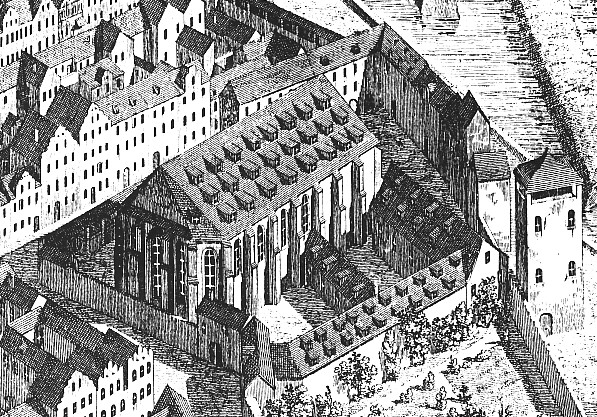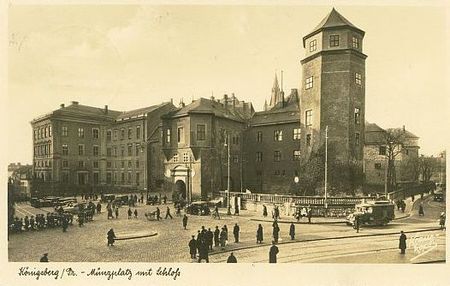Berlin was successivelly the capital of the Kingdom of Prussia, the German Empire, the Weimar Republic, Nazi Germany and, when divided, East Berlin became the capital of the DDR. Following Reunification (1990), the city again became capital of all Germany. In this blog you will find pictures and info about 3D models of Berlin buildings, especially, structures related to the German Empire. Also, you may find Third Reich era buildings, and some more recent architectural works.
Tuesday, February 25, 2020
Tuesday, February 14, 2012
Let's start with U-Bhf. Hallesches Tor.
As with some other U-Bahn stations in Berlin, Hallesches Tor was named after a historical city gate, in this case, Hallesches Tor was the start of the road that led to the city of Halle upon the Saale, in present-day Saxony-Anhalt.
Sunday, June 26, 2011
Dresden again (I)
Let's start with the Sophienkirche.
The story of this church started in the year 1272, when the Franciscans built a monastery (Franziskanerkloster) in the arounds of the city walls and what was to become the Dresden Castle. In the first half of the 14th century, the first structure was demolished, and a new, larger one was built, with the distinctive two choir areas.
Around 1541, in the time of the Reformation, the monastery was abolished and the Franciscans left the place. The building stood empty until it was reopened as a Lutheran church by Sophie of Brandenburg in 1610. In the following century, the Sophienkirche also became the city's Evangelical court church (Evangelische Hofkirche). Another change around the same time was the installation of a Silbermann pipe organ between 1718 and 1720, in which Bach probably performed (It shoud be noted that his son Wilhelm Friedemann was organist in the church from 1733).
Starting from 2009, a memorial has been under construction. Resembling the Busmannkapelle, it's scheduled to be finished this year, although no project for the church as a whole has been planned yet.
Thursday, February 3, 2011
Schneidemühl II - Main station and demolished church
The Hauptbahnhof Schneidemühl complex was built between 1851 until the 1876, when the city was part of the Province Posen in the Kingdom of Prussia. By those years, the complex, which included a train depot 430 m. eastwards, became an important part of the Prussian Eastern Railway that connected Berlin with Königsberg, and in the following years new lines were built connecting Piła with Posen, Neustettin, Flatow, Bromberg, Danzig, Frankfurt on the Oder and Wałcz (Gr. Deutsch Krone).

The next model is the Johanniskirche, which didn't have enough luck to survive to these days.
 Picture from schneidemuehl.net.Note that the house next to it is still standing.
Picture from schneidemuehl.net.Note that the house next to it is still standing.As happens usually with other buildings that do not exist anymore, the geometry work was the easy part. However, looking for other churches with similar caracteristics and some reference pictures was enough to get such a beautiful result. I hope this model to serve as a basis for a future reconstruction in Piła, one day. Enjoy.


Sunday, August 8, 2010
Königsberg Castle
Place of coronation of two Prussian Kings (Frederick I as King in Prussia and Wilhelm I, future German Emperor), by 1861 the Königsberg Castle was more than the walls and towers of the once Teutonic fortress. When Wilhelm I was coronated, the castle had incorporated the old defensive walls dating back from the Teutonic period (15th century), the Brick Gothic church (Schlosskirche) from 1594, the "Blood Court" (Blutgericht), a wine cellar built in the late 14th century, and some recent structures from the 18th and 19th centuries.
Konigsberg Castle: Brick gothic church and tower (middle), Blutgericht (right)
The Haberturm was the oldest tower (built ca. 1255) of the castle. It was the northeastern tower of the Schloss and a distinctive part of it, being visible from the other bank of the Schlossteich (Castle pond).
The castle contained also the Prussian Collection, with exhibits from the Prussian State Library and many art works.
All of this burnt down after the savage attack carried out by RAF in August 1944 - more than 800 airplanes bombed the city centre. Minor bombings by the Soviet air force, and later the Battle of Königsberg further damaged the castle. After the war, the Altstadt was no more than some destroyed buildings, the Königsberger Schloss and the shell of the Cathedral.
Königsberger Dom (Cathedral) as seen from the ruined Castle, 1949.
Despite all, the Castle walls remained standing. The end definetely came in 1968, when USSR leader Leonid Brezhnev decided to delete any sign of German past. The Schloss survived the first blast, - as a last showing of defiance to the Reds - that only torn down the brick gothic tower. A second explosion erased from Earth the remaining parts of this jewel (called "a symbol of Prussian fascism" by the Soviets, as other palaces like the Stadtschlösser in Berlin and Potsdam. The same they said, the same they did).
I have tried to make it the most accurate as possible, using a ground plan of the castle. The geometry work was the easy part - texturizing it was the difficult one. Although I could find many photos of the east, south and western parts, and three photocromes (Südseite, Ostseite and courtyard), I did not found pre-war photos of the northern side, for them I reviewed pictures displaying the ruined building.
Hope you like it.
Thursday, July 29, 2010
The 'Mosque' on the Havelbucht
Tuesday, June 29, 2010
From Berlin to Potsdam
The first one is, obviously, Schloss Sanssouci.
Easily one of the most famous palaces in Germany, Sanssouci is the former summer palace of Prussian king Frederick II, "the Great". The palace was designed by Wenzeslaus von Knobelsdorff following plans of Frederick himself, as a private residence for the King. The palace was built between 1745 and 1747 in the so-called "Frederician Rococo".

The palace remained as a residence of the Hohenzollern Family until Wilhelm II abtidation. From then and although the building was still property of the former Imperial family, it was no longer used as a palace.
After WWII Sanssouci became mantained by the East German government, as a tourist attraction. Following German reunification, the body of King Frederick II was returned to Sanssouci, and buried in a new tomb.
The New Palace in Potsdam (Gr. Neues Palais) was built under the rule of Frederick II, King of Prussia, to conmemorate the end of the Seven Years' War. The palace was built in a baroque style, and was intended to demonstrate the glory and power of the Kingdom of Prussia after tthe war. After his death, the palace fell in disuse until 1859, when it became the summer residence of Crown Prince Friedrich Wilhelm, later Kaiser Friedrich III. The palace was restored under the rule of Kaiser Wilhelm II.
After German Revolution, the palace was used as a museum.
The Orangery Palace was built between 1851 and 1854 in Sanssouci Park, Potsdam, by Friedrich August Stüler, a student of Schinkel, and L.F. Hesse according to drawings by King Friedrich Wilhelm IV.
These models are only part of a group of models I will make. The group will include:
- New Chambers
- Bildergalerie
- Belvedere
- The Communs near Neues Palais
- Antique Temple
- Temple of Friedship
- Historical Windmill
- Potsdamer Stadtschloss
- Nikolaikirche, Potsdam
- And finally, maybe, Schloss Charlottenhof and the Roman Baths.
Wednesday, April 14, 2010
And more Bahnhöfe
First, the Berlin Hauptbahnhof.
The Berlin Central Station (Hauptbahnhof, or simply Hbf) is the main railway station in Germany and the largest crossing station in Europe. It was built between 2001 and 2006 on the site of the Lehrter Bahnhof/Stadtbahnhof. The Hbf has served as the Central Station of Berlin since 26 May, 2006. Before that, a part of the in-work building was used as S-Bahnhof ("Hauptbahnhof - Lehrter Bahnhof").
Well, this model is not so new - I made (and uploaded it) on April 3th evening. The difficult part of it was the S-Bahn route, since it's made of about 20 arches, as you can see. In this model, I made only one arch, and then copied and resized it according to the width of that part.
New Mosse-Palais
The Mosse-Palais ("Mossepalais, "Mosse Palais" or "Palais Mosse") was a building located in Voßstraße, first property of Rudolf Mosse. The façade at Voßstraße was made of Sliesian sandstone, and the front at Leipziger Platz was provided with a relief of scluptor Max Klein (called "The Survey of German Genius", Die Erhebung des deutschen Genius). The old Mosse-Palais was destroyed (along other historical buildings) in November 1943 by a massive air raid.
I'm already working on the old Mosse-Palais (actually, I first started it), but since there are no more than three useful pictures, it will be difficult to get it textured soon.














